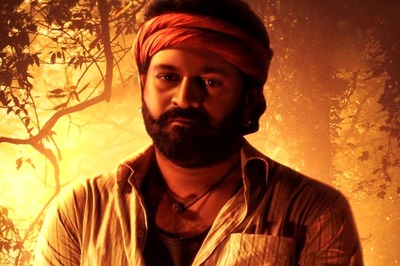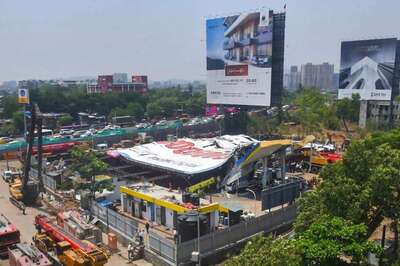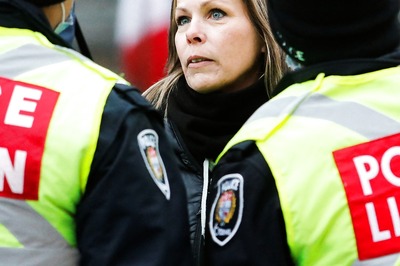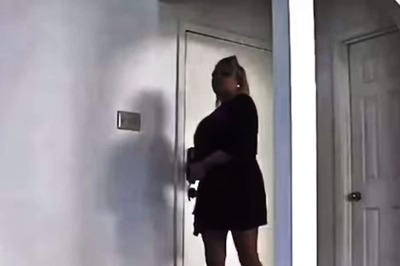
views
New Delhi: It has been almost a decade since Railway passenger fares were increased and its finances are in the red. The Indian Railways is the country's 24*7 lifeline, registering 23 million passengers and up to 2.65 million tonnes of freight traffic per day.
With the Railway finances going from bad to worse, a question often asked is what is the prime reason behind it.
Why are the Railways sinking?
60 per cent of the revenues is spent on salaries and pension.
20 per cent is spent on fuel cost.
10 per cent goes towards paying the interests and other costs.
While the rest, a meagre 10 per cent, is available for investment and renewal.
Will a fare hike then pull the Railways out of the hole?
Crawl and sprawl
The Indian Railways has nearly 1.3 lakh employees, nearly 7.2 billion passengers, 1 billion tonne freight target, 2.2 lakh wagons, 51,000 coaches, 63,000 km track, 12,000 passenger trains, 7,000 freight trains, 9,000 engines, 1.3 lakh bridges and 7,000 stations.
Rising expenses
If one looks at the expenditure records of the Railways over the past few years, one finds it has been constantly rising.
2007-08 - 76 per cent
2008-09 - 90.5 per cent
2009-10 - 95 per cent
2011-12 - 95 per cent (expected)
More importantly, from a revenue of Rs 106,000 crore, nearly Rs 101,000 was spent on expenses, thus leaving a surplus of Rs 5,000 crore with the ministry.
The sinking railways
The Railway finances are currently in a mess. The expenditures are rising faster than the revenue. While, its freight rates are the highest in the world - in fact, it was hiked to 20 per cent last week - the second class passenger fares were last hiked in 2002. The passenger fares remain in a deep freeze. While the price index has seen an increase of nearly three fold over the last 20 years, sleeper fares have risen by half.
There is chronic, severe under-investment while reserves are low and continue to deplete.
Messy finances
An expert panel has said that the Indian Railways is "on the brink of collapse".
Its expenses are rising faster than its revenues. The second class fares have remained flat for over 20 years. In most cases, the payment to suppliers and contractors has been delayed. Only about Rs 5 crore remain in Depreciation Reserve Fund and the Depreciation Fund has been overdrawn by Rs 1300 crore.
Safety standards not met
Records suggest that more staff than passengers have been killed in railway accidents. Nearly 15,000 'trespassers' die every year. There is no safety culture at the Railways, with most coaches being described unsafe. A hit-and-run style of maintaining the trunk routes is followed. Toilet droppings are unhygienic and corrosive. Fire extinguishers are ineffective. There is no protocol for quick evacuation of passengers. Simple safety devices are not installed in most trains. There are no audio-visual aids for drivers, while past safety panel advice have been disregarded.
Nearly 1019 passengers have been killed over the past 36 months. Derailments are said to be the main reason. Nearly 1600 staff have been killed and around 8700 staff injured over 43 months.
Passenger coaches are structurally unsafe. Air brakes have flunked safety test. The procurement procedures are lax. Cooking gas is used in pantry cars despite ban on them. The anti-collision device is 10 years into 'development' stage. There is over-reliance on visual signals.
Only Rajdhani/Shatabdi coaches are said to be safe. Trains apart from the Rajdhani/Shatabdi are unsuitable for current speeds. The safety committee has in fact asked the Railways to stop production.
A drag on economy
The railways has a 993 million tonne freight target. However it is likely to fall short by 20 million tonnes. Meanwhile, the dedicated freight corridor missed its completion deadline of 2011-12. Sources say it is unlikely to meet its 2017 target.
Japan is to fund the Rewari-Vadodara stretch while the World Bank will finance the Khurja-Kanpur line. Reportedly, the Railways are not too keen on more Japanese funding. Sources say the project is unlikely to be completed before 2020.
Poor hygiene standards
Open defecation is the norm at the Railways. The green-toilets have been on trial for nearly 10 years. The undercarriages are not maintained. Toilet droppings are said to be the primary cause of rail corrosion. The Kakodkar panel has said that bio-toilets must be installed within the trains within 5 years.
Is the Railway Board culpable?
The Railway Board is often accused of being 'inward looking' and lacking vision, ambition and strategic thinking. The board reportedly opposes the tariff regulator. While it is skilled on operations, it has little execution ability. It does not have a viable commercial structure either.
The revival recipe
- Upgrade trunk routes
- Strengthen old bridges
- Build logistics parks
- Induct powerful engines
- Bring in safer coaches
- Invest in high-speed trains
- Build freight-only tracks
- Eliminate level crossings
- Install automatic signals
- Use information technology
- Recast railway board
- Use lighter, more capacious wagons
- Fence tracks in populated areas
- Modernize 100 stations
- Create 34 multimodal logistics parks
- Impose surcharge on passengers
- Disinvest Railway subsidiaries
What to expect from Rail Budget 2012
- Do not expect a turnaround budget.
- The Railway Ministry has its hands tied.
- Fare hike will likely be through a safety cess.
- Coach factory in Kerala with Bharat Earth Movers Limited (BEML).
- A captive power plant is planned in Gujarat.
- More trains to West Bengal, Gujarat.
- Anti-collision device may be scrapped.
- Train Protection and Warning System likely to be introduced.
- High speed train between Delhi and Mumbai is planned.
- Fuel hikes will likely not be passed on to passengers.



















Comments
0 comment